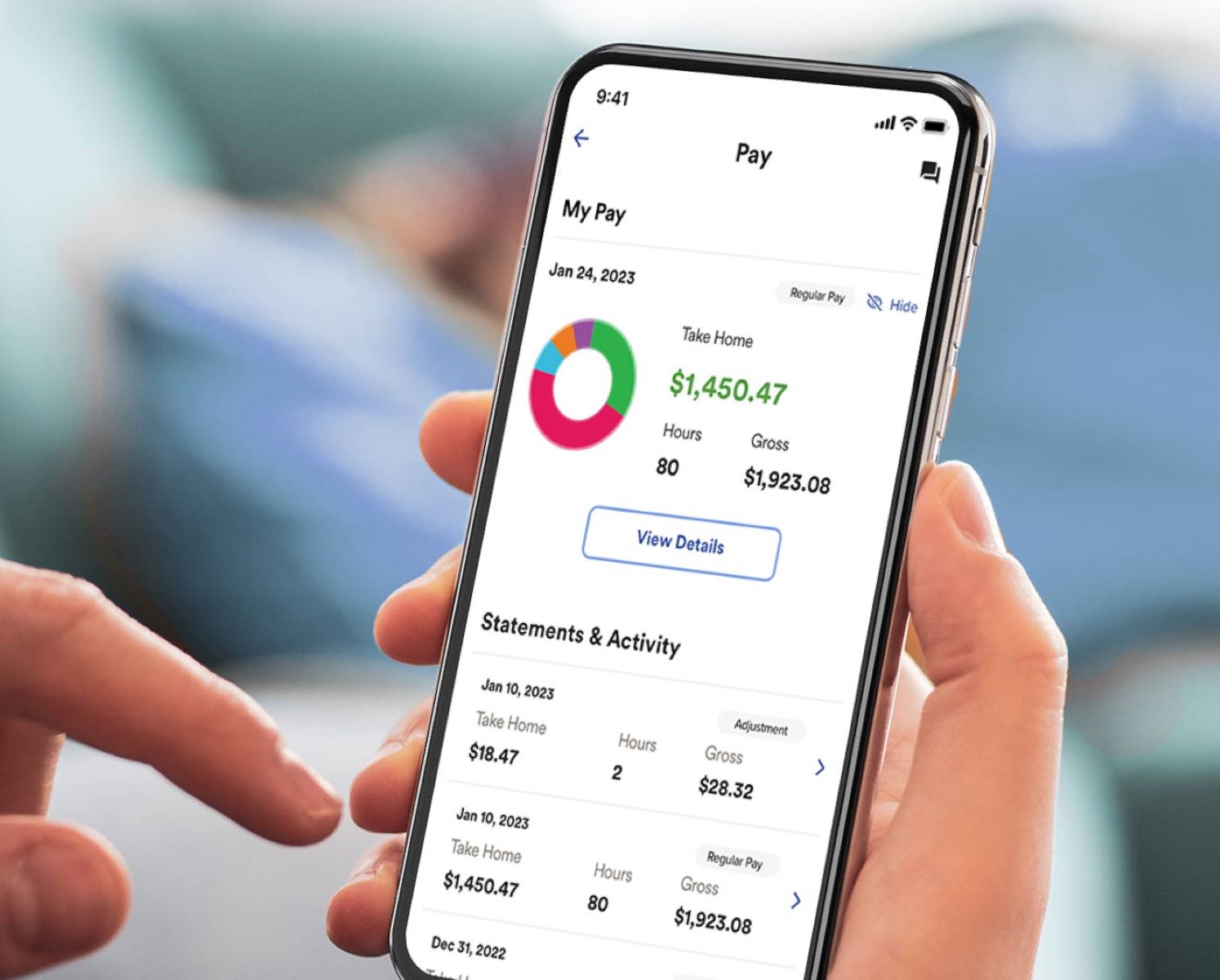

Finance
How Often Are Mutual Funds Compounded
Modified: December 30, 2023
Learn about the compounding frequency of mutual funds and how it impacts your finances. Explore the benefits and considerations of different compounding intervals in mutual fund investments.
(Many of the links in this article redirect to a specific reviewed product. Your purchase of these products through affiliate links helps to generate commission for LiveWell, at no extra cost. Learn more)
Table of Contents
- Introduction
- Understanding Compound Interest
- Mutual Funds and Compound Interest
- Frequency of Compound Interest in Mutual Funds
- Factors Affecting the Frequency of Compound Interest
- Advantages of High Frequency Compound Interest in Mutual Funds
- Disadvantages of High Frequency Compound Interest in Mutual Funds
- Strategies for Maximizing Compound Interest in Mutual Funds
- Conclusion
Introduction
When it comes to investing your hard-earned money, there are several options available. One of the most popular investment vehicles is mutual funds. Mutual funds offer a great way to diversify your portfolio and potentially earn returns on your investment. But have you ever wondered how often are mutual funds compounded?
Compound interest plays a crucial role in the growth of your investment over time. It refers to the process of reinvesting the returns generated by your investment, which then earns additional returns. The more frequently compound interest is applied, the faster your investment can grow.
In the case of mutual funds, compound interest is calculated based on the performance of the fund’s underlying assets. Mutual funds pool money from multiple investors and invest it in a diversified portfolio of stocks, bonds, or other securities. The returns earned by these assets are then reinvested into the fund, leading to potential growth for the investors.
The frequency at which mutual funds are compounded can vary depending on the fund’s investment strategy and the policies of the fund manager. Some funds compound their returns daily, while others may compound on a monthly or quarterly basis.
Understanding the frequency of compounding in mutual funds is essential as it can have a significant impact on your investment’s growth potential. In this article, we will explore the factors influencing the frequency of compound interest in mutual funds, the advantages and disadvantages of high-frequency compound interest, and strategies to maximize compound interest in mutual funds.
So, let’s dive into the world of mutual funds and discover how often these investment vehicles are compounded.
Understanding Compound Interest
Compound interest is a powerful concept that can greatly impact the growth of your investments over time. It refers to the interest earned not only on the original amount invested (known as the principal), but also on the accumulated interest from previous periods. In other words, compound interest allows your investment to grow exponentially.
To understand how compound interest works, let’s consider a simple example. Suppose you invest $1,000 in a savings account with an annual interest rate of 5%. At the end of the first year, you would earn $50 in interest, bringing your total balance to $1,050. In the second year, the interest is calculated not just on the initial $1,000, but on the new balance of $1,050, resulting in an additional $52.50 in interest. Over time, the accumulated interest continues to increase your investment balance, leading to higher returns.
The frequency at which compound interest is applied can have a significant impact on the growth of your investment. In general, the more frequently interest is compounded, the greater the overall return. For example, if the interest is compounded annually, you would earn $105 in interest after two years. However, if the interest is compounded quarterly, you would earn approximately $106.17, due to the compounding effect.
Compound interest can be a double-edged sword. While it can work in your favor by accelerating the growth of your investments, it can also work against you if you have outstanding debt with compound interest. In this case, the interest on your debt can accumulate rapidly and make it harder to pay off.
Understanding compound interest is crucial when it comes to investing in mutual funds. The frequency of compound interest in mutual funds can have a significant impact on the overall returns generated by your investment. In the next section, we will delve into how compound interest applies specifically to mutual funds.
Mutual Funds and Compound Interest
Mutual funds are investment vehicles that pool money from multiple investors to invest in a diversified portfolio of securities such as stocks, bonds, and other assets. The performance of these underlying assets determines the returns generated by the mutual fund. Compound interest plays a vital role in enhancing the growth of these investments over time.
When you invest in a mutual fund, your money is combined with the funds of other investors. The fund manager then uses this pool of money to buy a diversified portfolio of assets. As the underlying assets of the mutual fund generate returns, those returns are reinvested back into the fund. This reinvestment process is where compound interest comes into play.
The frequency of compound interest in mutual funds determines how often the returns generated by the underlying assets are reinvested. This, in turn, affects the growth potential of your investment. Some mutual funds compound their returns on a daily basis, while others may compound monthly, quarterly, or even annually.
For example, let’s say you have invested $10,000 in a mutual fund with an annual return of 8%. If the compound interest is calculated and reinvested on a daily basis, the returns earned each day would be added to your investment, resulting in a compounding effect. Over time, this compounding effect can significantly boost the overall returns earned by the mutual fund.
On the other hand, if the compound interest is calculated and reinvested on a monthly or quarterly basis, the growth potential may be slightly lower compared to daily compounding. This is because the returns earned in each period are reinvested at the end of the month or quarter, resulting in a less frequent compounding effect.
It’s important to note that the frequency of compound interest in mutual funds depends on several factors, including the fund’s investment strategy, fund policy, and the discretion of the fund manager. Different funds may have different compounding frequencies, and it’s essential to understand the compounding policy of a specific mutual fund before investing.
Now that we have a basic understanding of how compound interest applies to mutual funds, let’s explore the factors that influence the frequency of compound interest in these investment vehicles.
Frequency of Compound Interest in Mutual Funds
The frequency at which compound interest is applied in mutual funds can vary depending on several factors. While some mutual funds compound their returns daily, others may compound on a monthly, quarterly, or even annual basis. Understanding the frequency of compound interest is crucial as it can affect the growth potential of your investment.
One factor that influences the frequency of compound interest is the fund’s investment strategy. Certain mutual funds, such as growth funds, aim for long-term capital appreciation. These funds may compound their returns on a daily basis to maximize the growth potential of investors’ investments. On the other hand, income-focused funds may focus on generating regular income for investors and compound their returns less frequently, such as on a monthly or quarterly basis.
The fund policies and strategies set by the investment management team also play a role in determining the compounding frequency. Some fund managers may believe that compounding returns more frequently can lead to higher overall returns for investors. Therefore, they choose to compound the returns on a daily basis. Other fund managers may take a more conservative approach and opt for less frequent compounding, such as monthly or quarterly, to balance stability and growth.
The discretion of the fund manager also comes into play when deciding the frequency of compound interest. The fund manager has the authority to set the compounding policy based on their assessment of market conditions, the fund’s performance, and investor preferences. They may adjust the compounding frequency over time to align with their investment strategy and objectives.
It’s important to note that the frequency of compound interest is not the sole determiner of a mutual fund’s performance. While frequent compounding can potentially enhance the growth of your investment, it’s not a guarantee of higher returns. Other factors, such as the fund’s investment performance, fees, and expenses, also play a significant role in determining the overall returns.
Before investing in a mutual fund, it’s important to review the fund’s prospectus and understand its compounding policy. Some funds may explicitly disclose their compounding frequency, while others may not provide such detailed information. In such cases, it’s advisable to reach out to the fund’s customer support or consult with a financial advisor to get clarity on the compounding frequency.
Next, we will explore the factors that can affect the frequency of compound interest in mutual funds.
Factors Affecting the Frequency of Compound Interest
The frequency at which compound interest is applied in mutual funds can be influenced by a variety of factors. Understanding these factors can provide insights into why different mutual funds may have varying compounding frequencies.
1. Fund Strategy and Objectives: The investment strategy and objectives of a mutual fund can significantly impact the frequency of compound interest. Funds focused on long-term growth may choose to compound their returns daily to maximize the compounding effect and potential returns. Conversely, funds that prioritize generating regular income for investors may compound less frequently, such as on a monthly or quarterly basis.
2. Fund Policy: Each mutual fund has its own set of policies and guidelines that dictate the compounding frequency. These policies are determined by the fund management and may be influenced by factors such as market conditions, investor preferences, and the fund’s investment philosophy.
3. Investment Performance: The performance of the underlying assets in a mutual fund can impact the decision to compound returns more or less frequently. If the fund is consistently outperforming expectations, the fund manager may choose to compound returns more frequently to maximize the potential growth for investors.
4. Volatility and Market Conditions: The overall market conditions and volatility can also influence the frequency of compound interest. During periods of high volatility, fund managers may choose to compound returns less frequently to mitigate risks and ensure stability. Conversely, during more stable market conditions, frequent compounding may be favored to capture potential growth.
5. Investor Preferences: Mutual funds aim to cater to the preferences and needs of their investors. Some investors may prefer frequent compounding to maximize growth, while others may prioritize stability and prefer less frequent compounding. Mutual fund companies take into consideration these preferences when deciding on the compounding frequency.
It’s important to recognize that these factors are not mutually exclusive and may interact with each other. The decision to compound returns more or less frequently is a dynamic process that is evaluated by the fund management team based on these various factors.
Before investing in a mutual fund, it’s essential to consider these factors and evaluate how the compounding frequency aligns with your investment goals and risk tolerance. Some investors may prefer the potential for higher returns with frequent compounding, while others may prioritize stability and prefer less frequent compounding.
As we continue, we will explore the advantages and disadvantages of high-frequency compound interest in mutual funds.
Advantages of High Frequency Compound Interest in Mutual Funds
High-frequency compound interest in mutual funds can offer several advantages to investors. Let’s explore some of the key benefits:
1. Accelerated Growth: High-frequency compound interest allows for more frequent reinvestment of returns, leading to accelerated growth of your investment. By compounding returns on a daily or more frequent basis, the power of compounding can work its magic and generate higher overall returns over time.
2. Enhanced Wealth Accumulation: With high-frequency compound interest, even small incremental gains can have a significant impact on your wealth accumulation. The compounding effect can exponentially increase your investment balance, especially over a long-term investment horizon.
3. Potential for Higher Returns: More frequent compounding provides additional opportunities for your investment to grow. With each compounding period, your investment is given a chance to earn returns on both the principal and accumulated interest. Over time, this can potentially result in higher overall returns compared to less frequent compounding.
4. Benefit from Market Volatility: High-frequency compound interest can be beneficial during periods of market volatility. When the market experiences ups and downs, more frequent compounding allows for quicker reinvestment of returns. This can potentially help capture market upswings and mitigate the impact of market downturns.
5. Flexibility in Reinvestment Strategies: With high-frequency compounding, investors have more flexibility in their reinvestment strategies. They can reinvest the returns generated by the mutual fund at shorter intervals, allowing for adjustments based on changing market conditions or personal financial goals.
6. Increased Potential for Long-Term Financial Goals: For investors with long-term financial goals, such as retirement or education savings, high-frequency compound interest can significantly contribute to their success. The compounding effect over many years can help accumulate a substantial nest egg to support these long-term goals.
While high-frequency compound interest offers numerous advantages, it’s important to consider potential drawbacks and risks associated with this approach. In the next section, we will discuss the potential disadvantages of high-frequency compound interest in mutual funds.
Disadvantages of High Frequency Compound Interest in Mutual Funds
While high-frequency compound interest in mutual funds can offer advantages, it is important to consider potential disadvantages as well. Here are some key drawbacks to be aware of:
1. Increased Volatility: High-frequency compound interest can amplify the impact of market volatility on your investment. Frequent compounding means that your returns are reinvested more frequently, which can lead to higher fluctuations in the value of your investment. This increased volatility may not be suitable for risk-averse investors.
2. Higher Transaction Costs: More frequent compounding may require the mutual fund to buy and sell securities within shorter timeframes. This increased trading activity can result in higher transaction costs, such as brokerage fees and taxes, which can eat into your overall returns.
3. Liquidity Constraints: High-frequency compound interest may limit the liquidity of your investment. If compounding occurs too frequently, it can be challenging to access your investment or make changes to your portfolio without incurring penalties or fees. This lack of liquidity may not align with your short-term financial needs or investment preferences.
4. Potential Overtrading: In an effort to achieve high-frequency compounding, some fund managers may engage in excessive buying and selling of securities. This can lead to overtrading, which increases the risk of poor investment decisions, higher costs, and potentially negative impacts on overall fund performance.
5. Susceptibility to Market Fluctuations: Investments in mutual funds with high-frequency compound interest are more susceptible to market fluctuations. If the market experiences prolonged downtrends or periods of underperformance, the compounding effect may not generate the desired returns, and your investment may suffer losses.
6. Increased Tax Obligations: High-frequency compound interest can result in more frequent realization of capital gains, which may have tax implications. Depending on your jurisdiction and tax laws, you may be required to pay capital gains tax on the income generated by your investment, potentially reducing your overall returns.
It’s essential to carefully consider your investment goals, risk tolerance, and liquidity needs when evaluating the suitability of high-frequency compound interest in mutual funds. Analyzing the trade-offs between potential advantages and disadvantages is crucial in making informed investment decisions.
Now, let’s move on to discussing strategies for maximizing compound interest in mutual funds.
Strategies for Maximizing Compound Interest in Mutual Funds
Maximizing compound interest in mutual funds can help optimize the growth potential of your investment over time. Here are some effective strategies to consider:
1. Choose Funds with High Compounding Frequencies: When selecting mutual funds, consider those with higher compounding frequencies, such as daily or monthly compound interest. These funds can take full advantage of the compounding effect, potentially generating higher overall returns.
2. Opt for Reinvestment of Dividends: Many mutual funds offer the option to reinvest dividends automatically. By choosing this option, the dividends earned from your mutual fund investment are reinvested back into the fund. This enables compound interest to work its magic and enhance the growth of your investment.
3. Utilize Systematic Investment Plans (SIPs): SIPs allow you to regularly invest a fixed amount in a mutual fund at specific intervals, such as monthly or quarterly. By consistently investing over time, you can benefit from the compounding effect as your investment grows with each contribution.
4. Take Advantage of Compound-Enhancing Features: Some mutual funds offer features such as loyalty bonuses or top-up options. Loyalty bonuses provide additional units or bonus returns over time based on the duration of your investment. Top-up options allow you to increase your investment amount periodically, which can boost the growth potential through more frequent compounding.
5. Reinvest Capital Gains: When a mutual fund generates capital gains, consider reinvesting those gains back into the fund. By reinvesting capital gains, you can maximize the compounding effect on the additional returns, leading to potential accelerated growth.
6. Regularly Monitor and Review Your Portfolio: Keep a close eye on the performance of your mutual fund portfolio and review it periodically. Monitor the compounding frequency and returns being generated. If you find that the fund’s compounding frequency has changed or is no longer aligning with your goals, consider switching to a fund that offers more suitable compounding terms.
It’s important to note that while maximizing compound interest is beneficial, it should not be the sole focus of your investment strategy. Other factors, such as the fund’s performance, fees, and risks, should also be taken into account when making investment decisions.
Remember, investing in mutual funds involves risk, and past performance is not indicative of future results. Consult with a financial advisor to assess your specific financial situation and determine the most appropriate strategies for maximizing compound interest based on your individual goals and risk tolerance.
As we conclude this article, it is evident that compound interest plays a crucial role in the growth of mutual funds. Understanding the compounding frequency, advantages, disadvantages, and strategies to optimize compound interest can empower investors to make informed decisions and potentially enhance their investment returns in mutual funds.
Conclusion
Compound interest is a powerful force that can significantly impact the growth of investments over time. When it comes to mutual funds, the frequency of compound interest plays a crucial role in determining the overall returns generated by an investment. Understanding how often mutual funds are compounded is essential for investors looking to maximize the growth potential of their investments.
In this article, we explored the concept of compound interest and its application in mutual funds. We discussed how mutual funds pool money from investors and invest in a diversified portfolio of assets, with the returns from these assets being reinvested back into the fund. The frequency of compound interest in mutual funds can vary, with some funds compounding returns daily, while others compound on a monthly or quarterly basis.
We discussed the advantages of high-frequency compound interest, such as accelerated growth, enhanced wealth accumulation, and the potential for higher returns. However, we also highlighted the potential disadvantages, including increased volatility, higher transaction costs, and potential liquidity constraints.
To maximize compound interest in mutual funds, we recommended strategies such as choosing funds with high compounding frequencies, reinvesting dividends, utilizing systematic investment plans (SIPs), and taking advantage of compound-enhancing features. Regularly monitoring and reviewing your portfolio is also crucial to ensure that the compounding terms align with your goals and risk tolerance.
It’s important to remember that while compound interest is a powerful tool, it should not be the sole focus of your investment strategy. Other factors such as the fund’s performance, fees, and risks should also be carefully considered. Consultation with a financial advisor is recommended to tailor these strategies to your individual circumstances and goals.
In conclusion, understanding the frequency of compound interest in mutual funds and implementing strategies to maximize its effect can help investors unlock the growth potential of their investments. With a well-informed approach, investors can navigate the world of mutual funds with confidence and potentially achieve their long-term financial goals.














